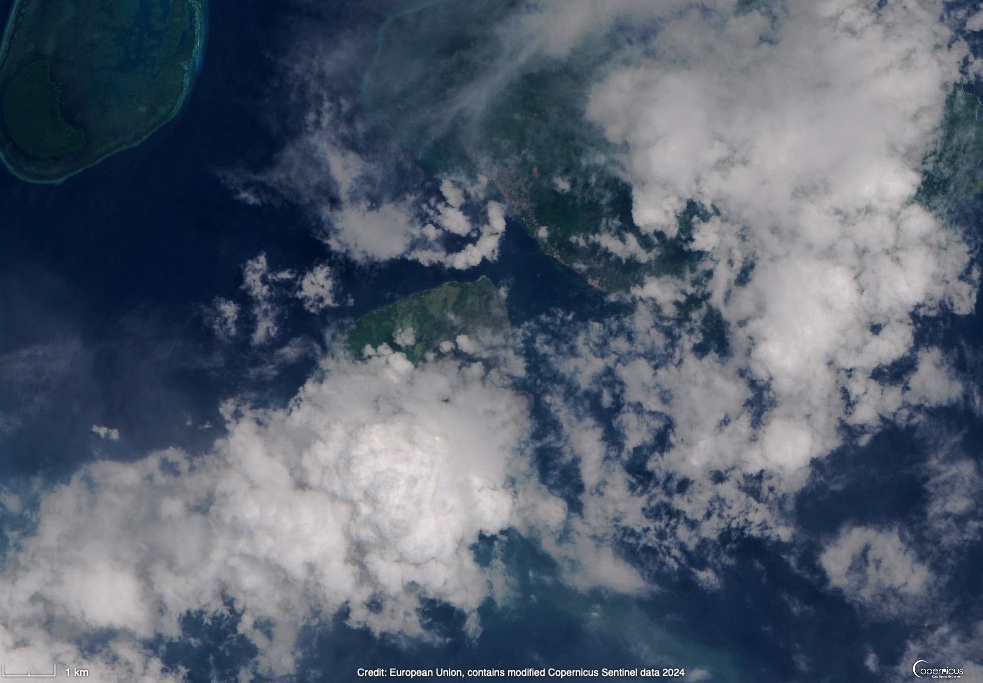Indonesia’s Ruang Unleashes a Massive Explosion
Posted on Categories Discover Magazine

Indonesia is possibly the most volcanically-active country in the world. It is the home of 127 potentially active volcanoes and one any given day it isn’t surprising to see that 5-6 of them are erupting. Now, most of these eruptions are small puffs of ash or maybe the slow extrusion of lava at the summit. However, Indonesia is also home to some of the largest explosive eruptions in the historical record and beyond. Krakatoa in 1883, Tambora in 1815 and Toba around 73,800 years ago were massive blasts that left indelible mark on the region (and planet). The potential is there for local destruction and global impacts.
Over the past couple days, Ruang, a volcano off the northern tip of Sulawesi, has seen some major explosions. Nothing on the scale of the beasts listed above, but still, some big events. Reports from the ground (along with impressive images) show what look like pyroclastic flows, lava bombs, ash fall and volcanic lightning at the volcano. Meanwhile, the Darwin Volcanic Ash Advisory Center has published alerts over the past 24 hours about ash reaching up to 63,000 feet (19 kilometers) and possibly higher.
Estimated plume height from the sulfur dioxide measurements of the Ruang eruption on April 17, 2024. Data from OMI measurements. Credit: ESA.
So far, it appears that the biggest eruption that sent ash that high was a singular event on the evening of April 17 (local time). Over 800 people living on the small island, as well as some living on nearby Thulandang Island, have been evacuated due to the eruption and thousands more may need to leave as well. A ~3 mile (6 kilometer) exclusion zone has been established around the volcano. Further away, ash from the eruption has lead to the closure of the Manado City airport over 60 miles (100 kilometers) from Ruang.
The size of last night’s blast was enough for the Indonesia authorities to issue a potential tsunami warning. This was based on the fear that the explosion itself or a part of island could have entered the sea, generating one of these deadly waves. Luckily, it does not appear that a tsunami was formed but not before thousands of people were told to quickly evacuate.
Ruang is no stranger to large eruptions. It produced a VEI 4 eruption during late September of 2002. Although that isn’t a large of an eruption as such historical eruptions like Mount St. Helens in 1980 or Pinatubo in 1991, it is still one of the largest explosions of the 21st century. Over the past few hundred years, there have been multiple significant blasts from Ruang.
Global Impact?
One of the big questions that always comes up when a volcano has a “big” explosive eruption is whether it will have an impact on the Earth’s climate. Very large eruptions have the potential to cool the planet for months to years thanks to little droplets of material like sulfur dioxide that get into the upper atmosphere. However, just because an explosive plume looks big doesn’t mean that such an impact is inevitable.
It really comes down to four main factors: how big, how long, how much and where. Eruptions need to get a lot of these aerosols into the stratosphere so that they can spread across the globe or hemisphere. The 1991 Pinatubo eruption that did cause a small amount of cooling (~0.25 degrees C) in the northern hemisphere emitted 18.5 Tg (or about 40 billion pounds) of sulfur. That’s a lot! The plume from Pinatubo reached a maximum altitude of almost 100,000 feet (~30 kilometers) and the eruptions of close to this magnitude lasted for a few days.
That fulfilled all the key criteria for climate impact: lots of sulfur (how much and long add to this), very high plume (how big) and a location in the tropics (~15N). This last characteristic means the aerosols can get spread across the tropics of both hemisphere thanks to the wind patterns around the equator.
Back to Ruang … so far, this eruption, however impressive the images make it look, is not one of those big climate impact blasts at least based on the “how big” and “how long” criteria. It is located in the right place for having significant impact (~2.3N). We don’t know how sulfur-rich this eruption might have been and satellite data show sulfur dioxide emissions, but that’s to be expected from any volcano.
The key will be whether this eruption continues. The September 2002 eruptions from Ruang only last 4-5 days before the volcano went back to sleep (mostly). I’m sure the Indonesia authorities will be watching it closely.